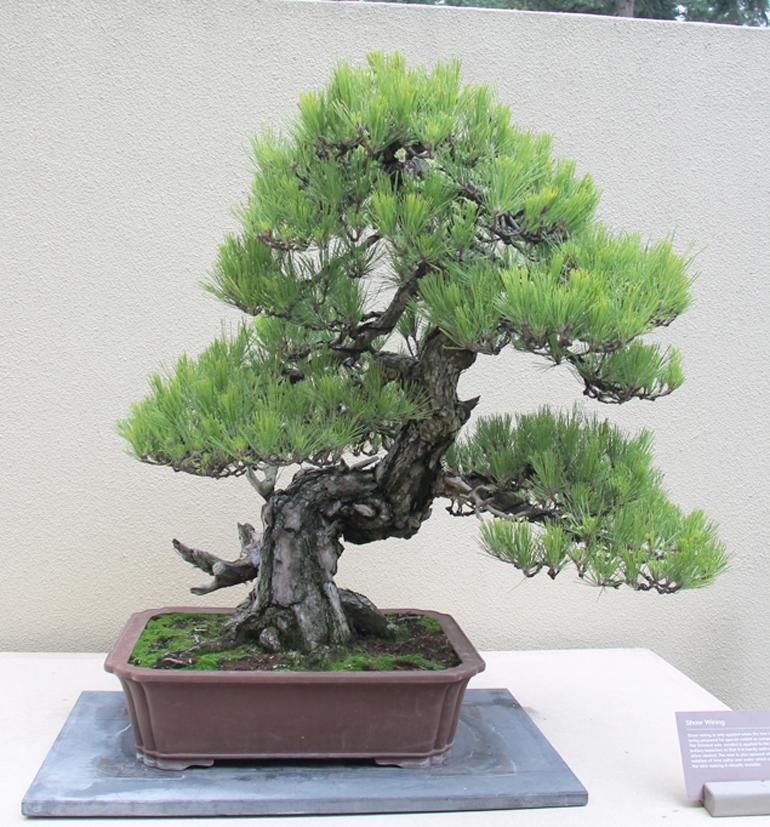
A strong statement in favor of the wild unmanicured look. It's a Cork bark Japanese black pine that lives at the Pacific Bonsai Museum. This photo and all the other photos shown here, were taken by Kurt Simonson.
Here’s its plaque:
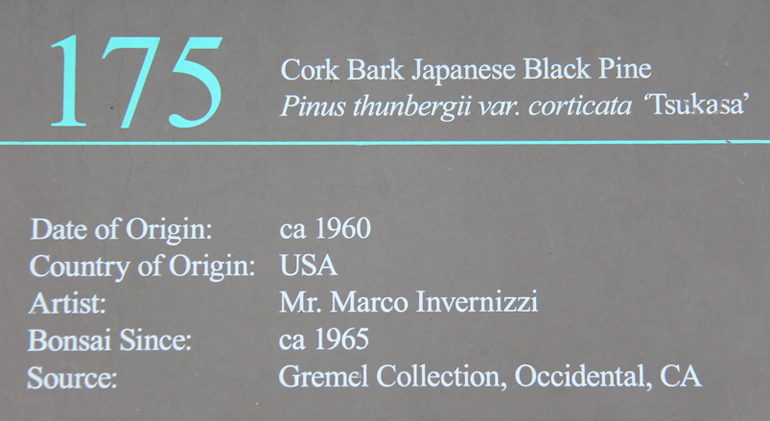 Last month, while at the Artisans Cup, I and a large group of fellow bonsai lovers took a Cup sponsored tour to the Pacific Bonsai Museum.
Last month, while at the Artisans Cup, I and a large group of fellow bonsai lovers took a Cup sponsored tour to the Pacific Bonsai Museum.
While there, I had the good fortune to meet Kurt Simonson who came ready and willing to shoot every tree at the museum, which he did (with the exception of the trees in the tropical greenhouse). Including the plaques that accompanied each tree. This turned out to be very fortunate, as there is no way I could begin to remember each and every tree, let alone the artists.* All the photos shown here are the result of Kurt’s diligence.
The six trees shown here represent a small fraction of the total photos by Kurt. We’ll post some more tomorrow.
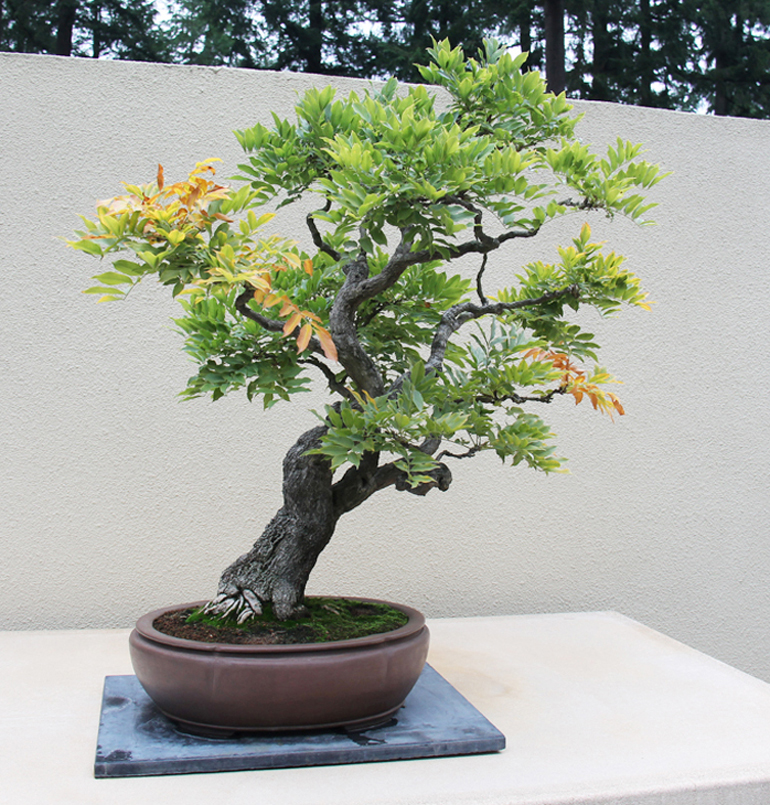
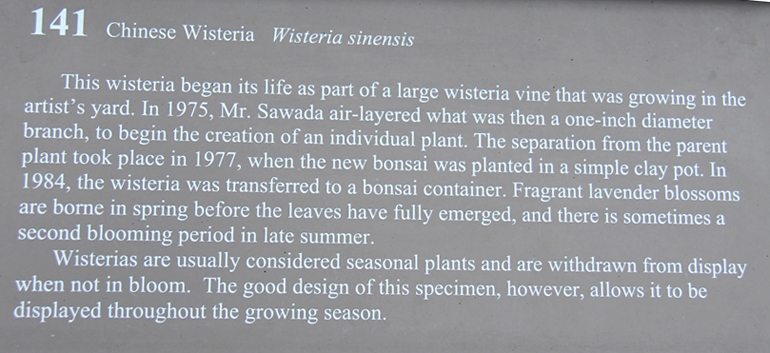
There are two types of plaques at the Pacific Bonsai Museum. The simple type you see with the Japanese black pine above and more detailed plaques like the others shown here.
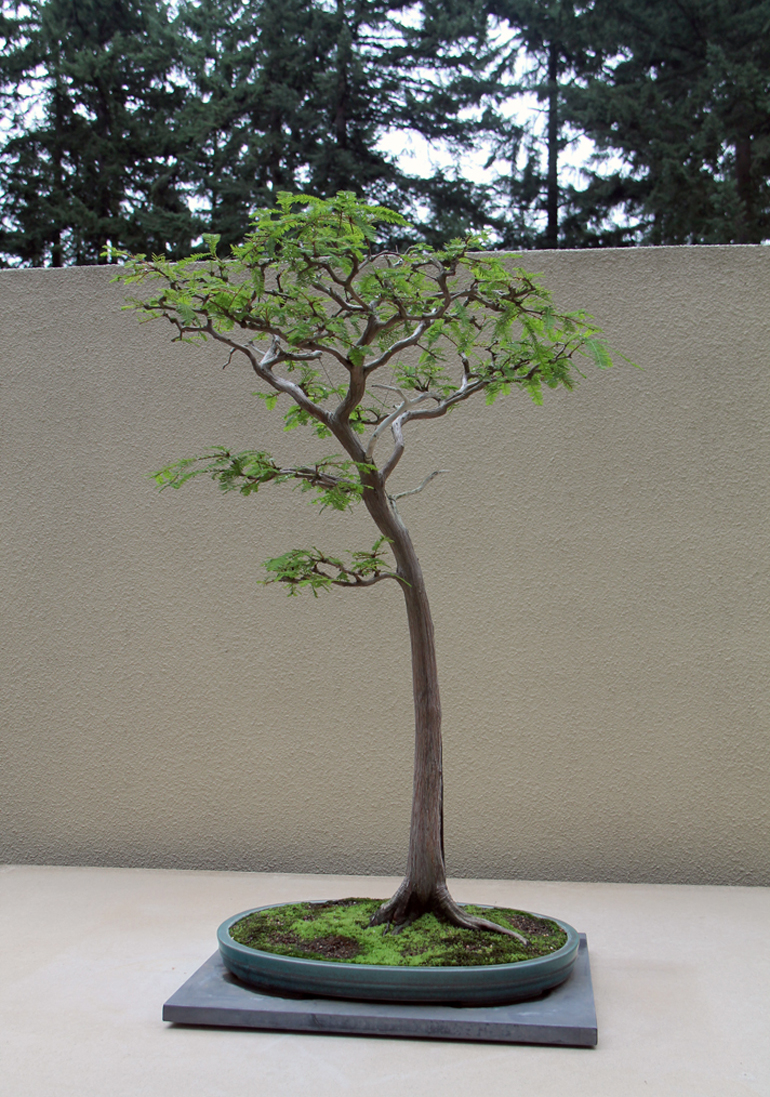
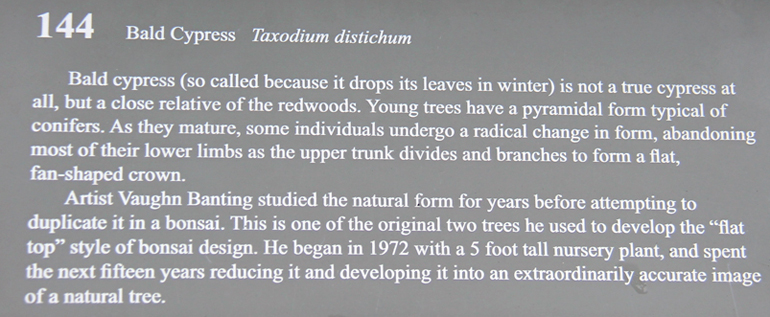
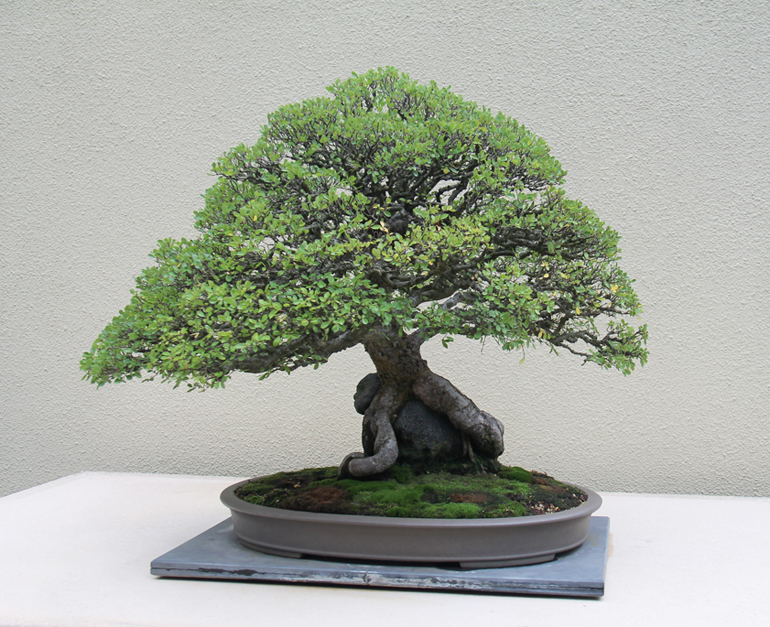
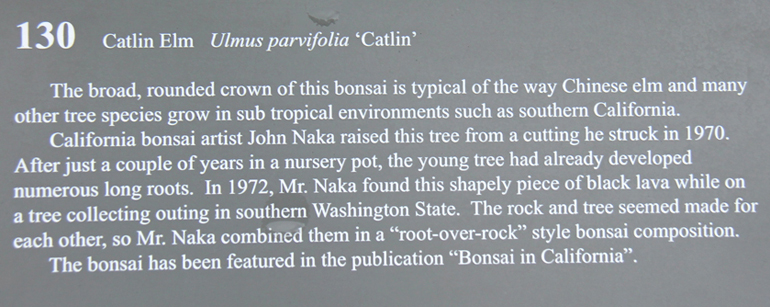
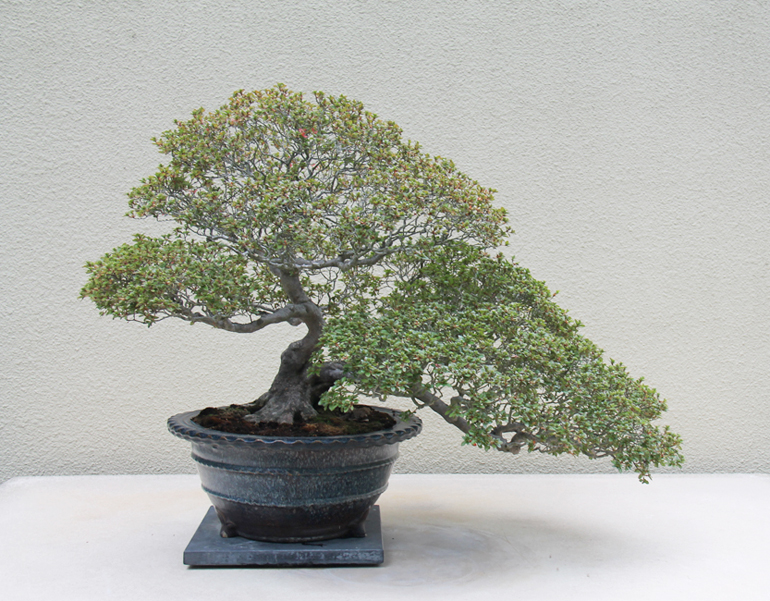
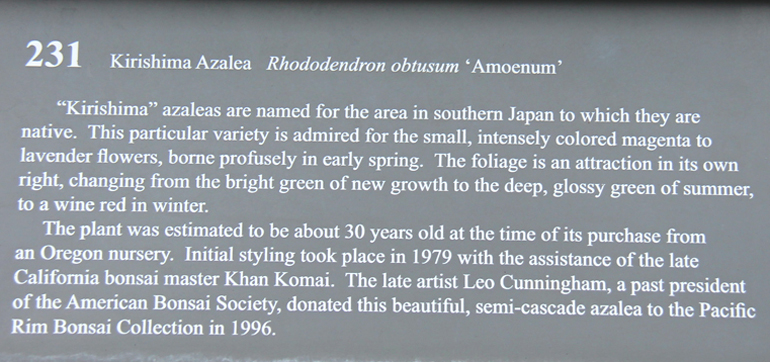
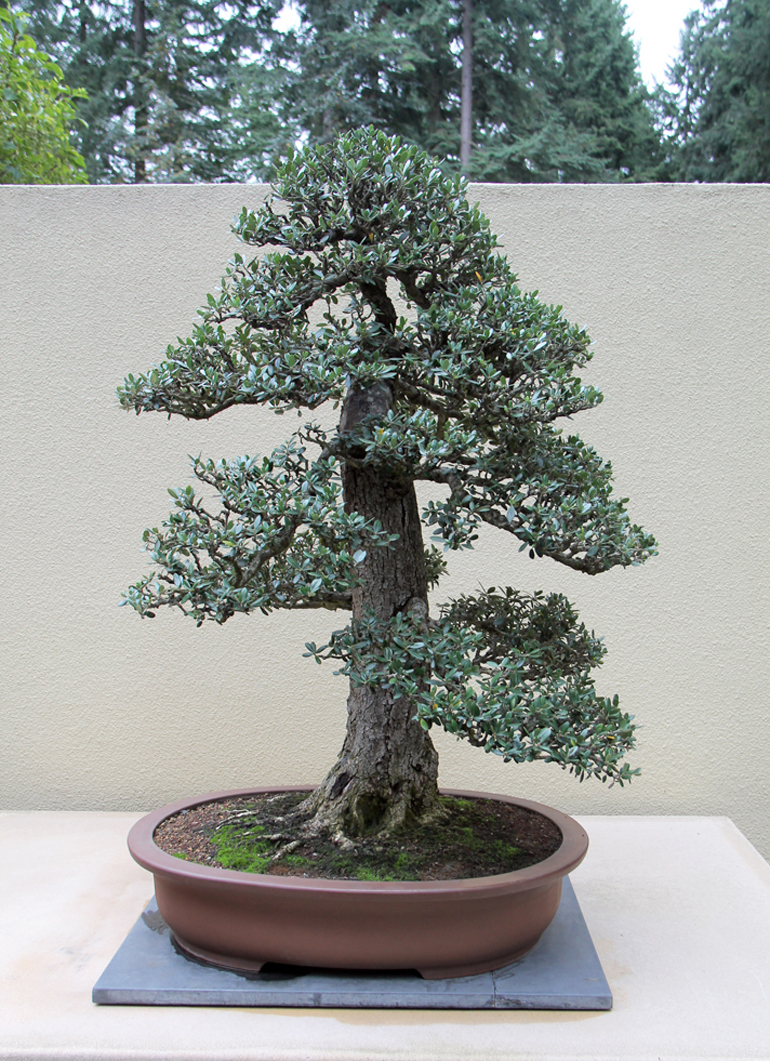
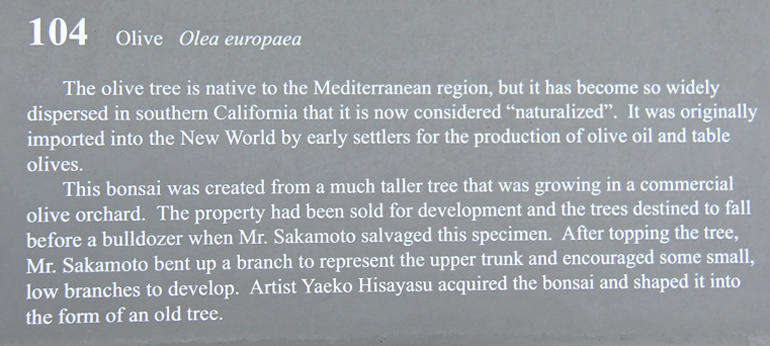
*You sometimes hear and see the opinion that there’s no need to know who the artist is when it comes to bonsai. The tree speaks loud and clear on its own and that’s all we need to know.
This argument make sense until you stop and think about the last time you visited an art museum. Or viewed art online for that matter. It’s customary to list the artist with paintings, sculpture and other arts, so what’s the problem with listing bonsai artists?
But even if you don’t buy this argument, many or perhaps most of the best bonsai you see belong to bonsai professionals who are trying to make an honest living. In this light, making sure to attribute (and link) is simple way to help an artist, and the art of bonsai, prosper.
A few things.
1) Another similarly wild Japanese black pine from this museum was the most divisive tree among the judges at The Artisans Cup. Imputing rakings from each judges scores, the five judges ranked that tree #71, #1, #54, #21, #6. That’s out of 71 tree. (Technically, the standard deviation of both their scores and the imputed rankings was greatest for this tree.) I don’t think it was this tree, but it shared a common aesthetic — and both have awesome bark.
2) The bald cypress was my favorite tree at the the PBM.
3) How many artists do you think should be listed for a single tree? Just the first? Just the most recent? Everyone who has taken serious hacks at the tree?
4) The Pacific Bonsai Museum (nee the Pacific Rim Bonsai Collection) is now an indepenent non-profit, and therefore need support from the public. They are still on their original membership drive. Everyone should consider joining, at at least donating. Certainly anyone who posts a blog entry and photos from the museum should support their continued existance with at least a few shekels.
Right, Wayne?
You raise some good points ceolaf.
1. I have nothing more to say about judging and scoring at the Artisans Cup.
2. I like the Bald Cypress also, though arriving at a favorite is usually beyond me.
3. It’s a good question and I’m not sure I have a good answer. Even though I harp on attributing the artist, that’s not always easy (as you point out) so, I suppose listing the owner is the easiest way to go. That’s what the Japanese do and we seem to be following suit in the West. Maybe then, it’s up to the owner to come clean about the artist. See, I don’t have a good answer.
4. Okay. You’re right. I’m going to do my best by continuing to promote the PBM (and other worthy bonsai endeavors) and I will look into joining and if that isn’t affordable for me, I will donate 100.00.